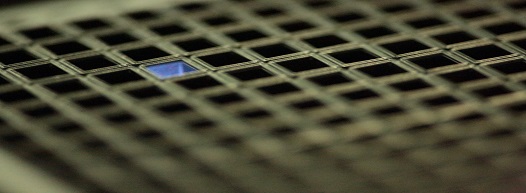Fluorescence cross-correlation spectroscopy (FCCS)
FCCS is an extension of FCS, whereby two spectrally distinct dyes are excited, usually at two different wavelengths. Their emitted fluorescence is split subsequently by dichroic mirrors and filters into the respective detection channels. A cross-correlation analysis is then made, where the signals of the two channels are time-correlated with each other to collect information about particles that carry both dyes. With this experimental setting it is straight forward to label the ligand and the interaction partner with different fluorescent dyes and co-incubate both molecules for interaction analysis. In this set up two independent autocorrelation curves for both interactors and the cross-correlation curve can be recorded. From this, the concentration of both labeled molecules, their diffusion time and hence their weight and the parameters of potential sub-fractions can be calculated. Importantly, the concentration of molecule that carry both labels and thus have passed through the detection volume as complex can be assessed directly. .jpg) Fluorescence cross-correlation spectroscopy (FCCS) Two lasers are focused on an overlapping spot and generate - in combination with confocal optics - a microscopic detection volume (drawn in as black spheroid). With this set up two different species of fluorescent molecules can be analyzed in parallel. Particles dwelling in the detection volume emit photons, which are recorded on highly sensitive Avalanche Photo Detectors (APD´s). In both fluorescent channels fast subpopulations can be distinguished from larger, slower particles by correlation analysis of the recorded photon count trace. Additionally, molecules that carry both labels are scored, indicating the number of labeled molecules directly interacting with each other. The possibility to determine the specific interaction of a ligand to its receptor allows performing measurements in cellular lysates, where the labeled ligand is present conjointly with the majority of other cellular components (Nucleic acids, proteins, cofactors and lipids). Whereas the application of autocorrelation analysis allows to distinguish between bound and unbound ligand and thus determines the overall binding to all components present in the lysate, the combination of autocorrelation with cross-correlation of two distinctly labeled molecules will extract all necessary information to set up the law of mass action: The concentration of free and bound interaction partners as well as the concentration of the formed complex. |

